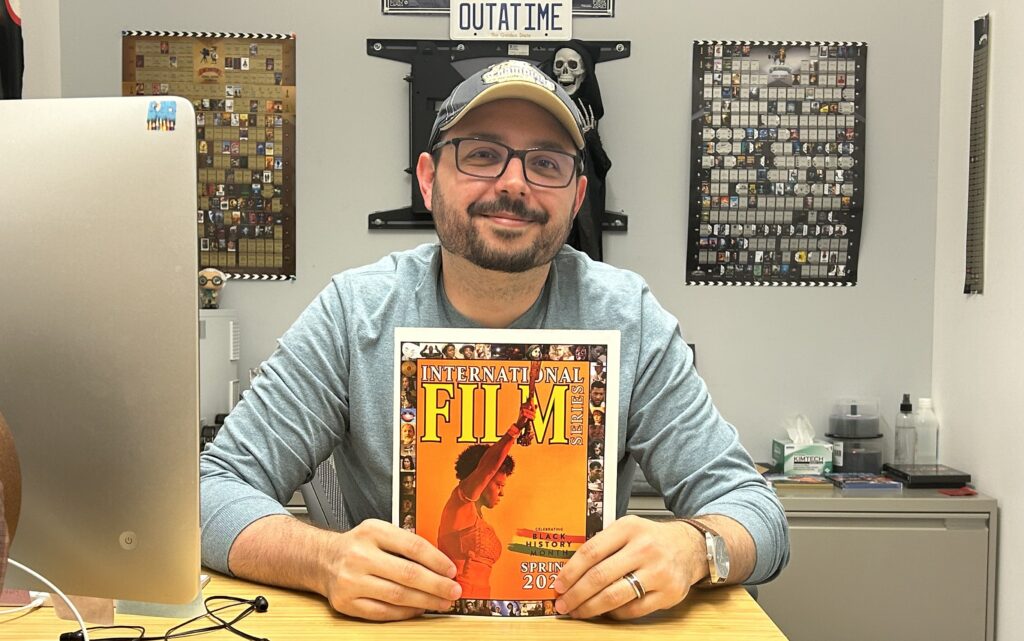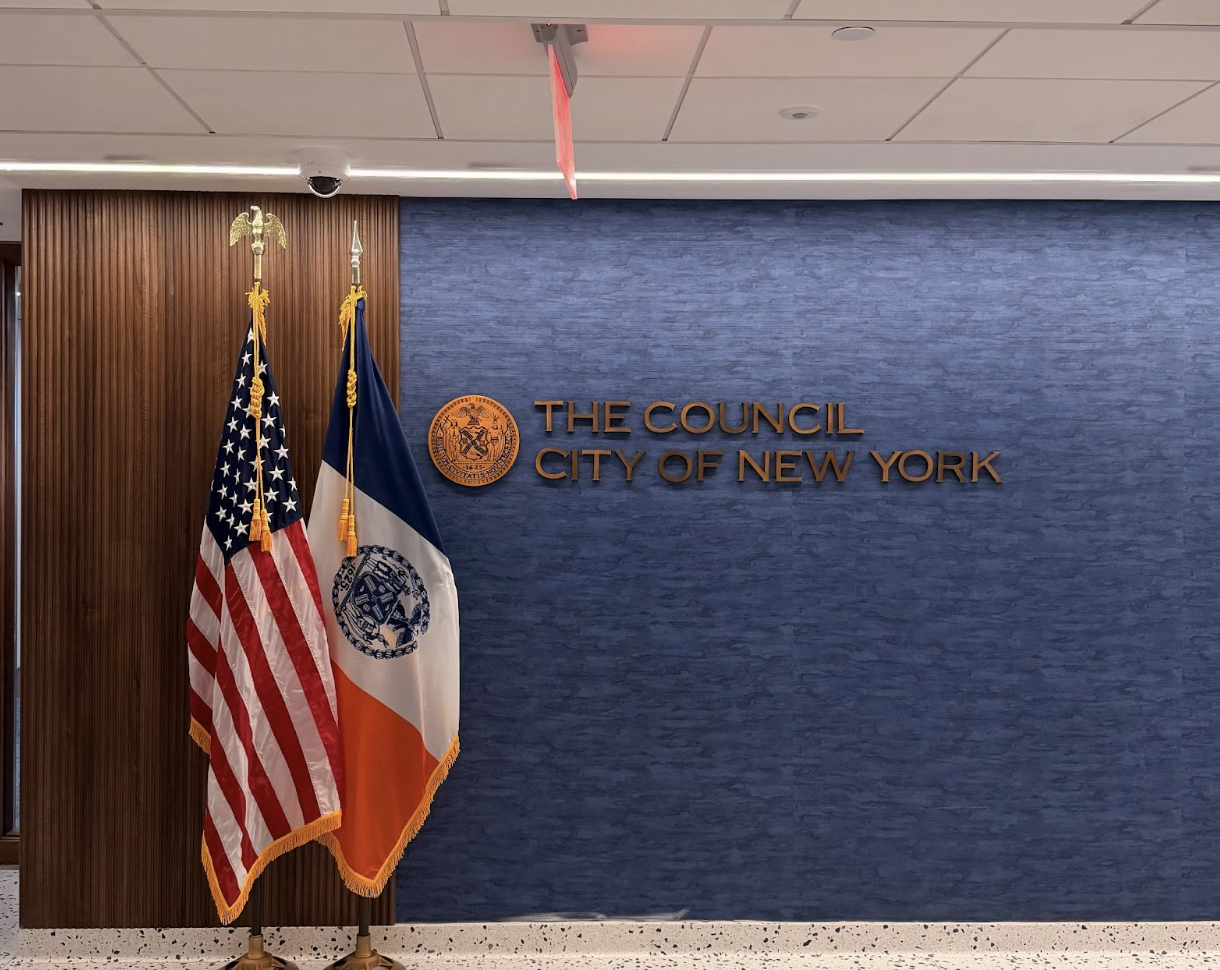(DENVER, Colo.) — Like in-person blockbuster theater chains, arthouse theaters risked becoming pandemic casualties, forcing the industry to pivot business strategies in order to survive not having in-person audiences. As streaming services exploded in content and popularity throughout the early days of the pandemic, in-person film and art venues were faced with near obsolescence.
Arthouses, also known as independent theaters, have long served as an important outlet for creativity and freedom of expression, and often low-budget production, in the film art world. More than 400 arthouse theaters and festivals span North America, and their increase in popularity is evidenced by organizations like Arthouse Convergence that tracks sponsors and events, and maps arthouse theaters. Colorado arthouse theaters vary in style of operation, but overall can reflect on how the past years have affected them, and where they are now.
A fundamental challenge the arthouse industry faces is its constant battle to gain audience exposure. Arthouses show hundreds of films each year, and three years after the pandemic some of these titles include “Tar,” “The Whale,” and “Skinamarink.” Given that the films screened are often small-scale productions with little name recognition, the audience seeking out such screenings is already small as it is. The concern was how to get an audience back out post-pandemic, but the outcome was a pleasant surprise.
“I feel like our attendance numbers actually have been a little bit better than pre-pandemic,” said Jason Phelps, program manager of CU Boulder’s International Film Series. “That was a big concern, right? Because during the pandemic, everybody got used to watching things online, just sitting on their couch, and I get that it’s comfortable. You can chat during it, you can eat loud snacks, or whatever. But for the right movie, there’s nothing like seeing in a big auditorium … And I think people are eager for that now. They spent two years watching things on their couch, and it was kind of nice and comfortable. But they’re missing that connection and experience.”
Ironically, it appears that arthouse theaters have fared better than their larger blockbuster theater counterparts in recent years. Offering a fresh and interesting experience, immersive content, and preserving the reel-to-reel 35mm projector feel over digital in some cases. “Jesus Christ Superstar” was the Easter movie choice at IFS this year.
According to a report by Reuters from March 2, 2023, in 2019 big theater box office revenues in the USA and Canada topped $11 billion dollars, while those numbers in 2022 did not exceed $7.4 billion dollars. Cineworld, the second-largest theater chain next to Regal Cinema, filed for bankruptcy last September. The pandemic hit independent arthouse theaters differently. The challenge of enticing people to watch virtually and return in-person was a concern that spread throughout. But after 2020, several arthouse theaters managed to upgrade their technologies, like their projector systems, and even renovate with new chairs.
Since arthouses are smaller and less centralized than big box theater chains, this allows them to be more nimble. “We were one of the first organizations in the country to launch a virtual platform,” recalled Kevin Smith, CEO of Sie Film Center, the theater of Denver Film Society. Sie Film showcases 800 independent films a year. During the pandemic, Sie Film built its own streaming service on its website, Eventive, and provided instructions on how to use the service. The fact that mass appeal is not one of the driving forces for arthouse theaters gives them a unique ability to work swiftly. They have to get creative quickly in how they continue to do showings, by opening outdoor space for other purposes, creating drive-ins, or showcasing virtual festivals.
In 2020, The Lyric, an arthouse cinema based in Fort Collins, Colorado, opened a pandemic-friendly outdoor venue for concerts and allowed for private movie rentals. Similarly, the International Film Series, a program within Colorado University Boulder’s Film Department that has been locally programming since 1941, offered its titles through streaming services. By doing so, it was able to earn enough revenue to upgrade its projection system. “Streaming, it seems, is a blessing and a curse,” said Jason Phelps, IFS program manager.
Similarly, the Denver Film Society managed to quickly pivot and continue showing films. “We were of the mindset of, no, we need to keep going. We need to keep our audience engaged,” recalled Matthew Campbell, artistic director of the Denver Film Society. DFS exhibited the Denver Film Festival virtually and used outdoor space to maximize audience engagement.
Film on the Rocks is a yearly festival presented by the Denver Film Society. In 2020, it quickly pivoted and installed a LED projector showcasing its films as a drive-in theater, filling the Red Rocks Amphitheater parking lots with 300 cars of viewers. Not only did it forgo losing revenue, it brought back the time-honored tradition from the 1950s of drive-in theaters. Normally, when Red Rocks’ calendar is booked, the ability for showing films is extremely limited. However, with the pandemic changing that schedule, not only did the Denver Film Society have full lots and plenty of showings, but it also added Christmas holiday programming. The holiday program was so successful that the DFS plans to continue doing it this year.
The accessibility of arthouses
Unlike motion picture theaters, the movies selected for screening in arthouses are not based on consumer data according to Campbell. Streaming services use algorithms to determine movie choices and recommendations to consumers. Likewise, blockbuster theaters base their decision of which films to invest in on film revenues. Arthouse programmers, or individuals who are staffed to curate the screened films, often undergo a deliberate process of viewing, analysis, and logistics.
“It’s balancing it to making sure that it’s a diverse number of stories and storytellers being told,” Campbell said. “You want to have your own stamp on it and have an identity but at the same time, I’m not programming the festival for my personal tastes … I realized what I like maybe not a lot of other people like.”
Arthouse theaters provide a platform for carefully curated film schedules that are subjective and deliberately judged by a professional curator. “If we’re partnering with organizations,” Smith said, “it’s really like working with the organization to understand like, what does your community want? Need? What are the gaps? What are the conversation points, what are the topics of interest? And then our team will go out and sort of look for films that fit within that genre.”
It’s not uncommon, according to individuals overseeing arthouse theaters, for their programmers to attend the film with the audience at its premiere. Doing so provides a rare experience where the people who choose the films get to see the audience’s reaction firsthand, and can engage with them on their thoughts of the film.
Arthouse theaters intend to educate and expand worldviews through film. Campbell said “Foreign films that don’t have enough commercial value to us distributors, they’re not going to pick them up and release theatrically or they’re not going to get, you know, bought by Netflix and streams. So it’s just the economics of it, that they’ll have more of a life within their own native country, but not necessarily here.”
Even as arthouse theaters provide such a platform, the gap of truly “independent” films being shown is narrowing, so the arthouse festival platform is the ultimate space for very unknown titles. Nowadays, arthouse theaters like Sie Film Center, along with larger theaters like AMC, will show bigger films such as “Everything Everywhere All At Once,” or “Beau Is Afraid.”
“People are more outgoing and adventurous in their choices, but they wouldn’t necessarily work for a theatrical engagement, because it just doesn’t have that. That marketing, you know, especially post-pandemic, the boutique distributors, and in the houses that most of our films that we book theatrically, they are really scaling down … With the film festival environment, you don’t have to think as commercially. I can think about including films that I know aren’t going to be commercially successful,” Campbell explained.
The priorities change when money isn’t the driving force and programmers get to decide on a much vaster array of options.
“But they speak to our mission. And you can still include those films because the few people that do watch it are really gonna get something out of it. But you can’t necessarily do that as a business model year-round.”
Denver Film Society collaborates with community members to produce the annual Denver Film Festival. The Denver Film Society is a nonprofit, and partners with other nonprofits to open dialogue, listen, and implement what several groups are looking for. Cases in point, Women and Film, Dragon Boat, and Martha’s Vineyard African American Film Festival are just some of the organizations that represent marginalized groups within Denver Metro. All of these varied programs are composed within the Denver Film Festival as the festival consists of the films chosen for them. Part of the experience includes discussions not just vertically with directors, or filmmakers, but horizontally with members of the community and how they experience such representation.
Cinematic delight
The International Film Society at Colorado University, Boulder, provides a hybrid of reel-to-reel 35mm film projectors and the latest digital projection systems “to both honor the rich legacy of the past, the present, and future.”
They provide old-fashioned ushers at their screenings, discourage cell phones, never show ads, and screen as many films as possible on celluloid. Soon to come is the showing of “Akira” in its 35mm format. Being able to see films in their original film format is a special treat, and more difficult for theaters to pull off for several reasons. The cost is higher since every title shown is a payment to a distributor, and not all distributors own the film version of the title, so whoever does have the ownership also gets paid to send the film title. Every time a movie on film goes through a projector, it receives a bit of damage, making it harder for people to be willing to send their titles, with some private collectors holding onto them with no intention of ever allowing damage.
Another reason that it is so difficult to show movies on film is the fact that the number of people equipped to run 35mm projectors has dwindled. Film projectors require a trained professional to run them, they are more expensive and require more work. If you can play DVDs at home, chances are anyone can run a digital projector. Film projectors, on the other hand, require a keen eye to ensure the projection is centered, in focus, and switching between projectors when the cue mark shows so the audience cannot see the transition take place. The cue mark is usually a black circle on the top right corner of the screen that indicates to the projectionist that it’s time to switch over to the next reel. While most arthouse theaters have these projectors, they don’t always utilize them for one reason or another.
Where does arthouse stand?
As society largely recovers from the pandemic, Jason Phelps described how there was once a fear that the in-person turnout would be scarce. To the IFS’ surprise, many people continue to come out of their homes to view these films. Phelps pointed to the fact that people are ready to be out of the house a year after quarantine, but also that they may just be exposed to films they either wouldn’t have access to, or think to watch. Take the Japanese film “Tetsuo: the Iron Man,” or the Chilean film “The Wolf House,” for example. In some ways, there seems to be trust and openness in arthouse audiences towards the programmers. Further, by coming out to watch a film on the big screen, there is the ambition that a sense of community will develop. Familiar faces and panel discussions on films with other enthusiasts won’t be held at home.
Arthouses generally offer more of an “artistic experience” than major theater chains. A community forms out of these theaters as moviegoers become regulars, often even buying movie passes to get discounted prices. Faces start to become more familiar as the theater remains the space where viewing and discussion take place around the films. As a museum carefully curates art for enrichment and audiences, so do arthouse theaters carefully curate films that enrich culture and ideas in their pure form from filmmaker to audience. Phelps explained how weekdays are 75% film students and 25% of the Boulder community, but on weekends those numbers switch as students are less willing to watch on their off-days.
When asked what the goal of Denver Film is to Campbell, his response encompassed what arthouse is really about:
“There’s three E’s that I like to think of,” Phelps said.”Educate, entertain, and empathize. Creating empathy, entertaining people, and educating people. I think that our driving force for the Denver Boulder Metro Area community is to do that within the walls of the Sie Film Center.”
The future of arthouses is uncertain due to the nature of film evolving rapidly. One thing that is certain is that the individuals who make up these arthouses are dedicated to providing one-of-a-kind experiences that nourish unique expression, education, and new perspectives. While arthouse theaters may face a crisis as time continues, the hope is to maintain the advent of watching cinema at the cinema, to preserve the theaters we love so much.
“I think that the gap between the big blockbuster and the small indie is going to widen. Unfortunately, there’s not gonna be as many of those kinds of in-the-middle films.” Phelps reluctantly predicted, “Those middle films a lot of times can be some of the better films because they’re not beholden to like a large executive producer studio and all these little things you have to check box, but they also still have enough of a budget to be able to do [what] I know what they want to do.”


